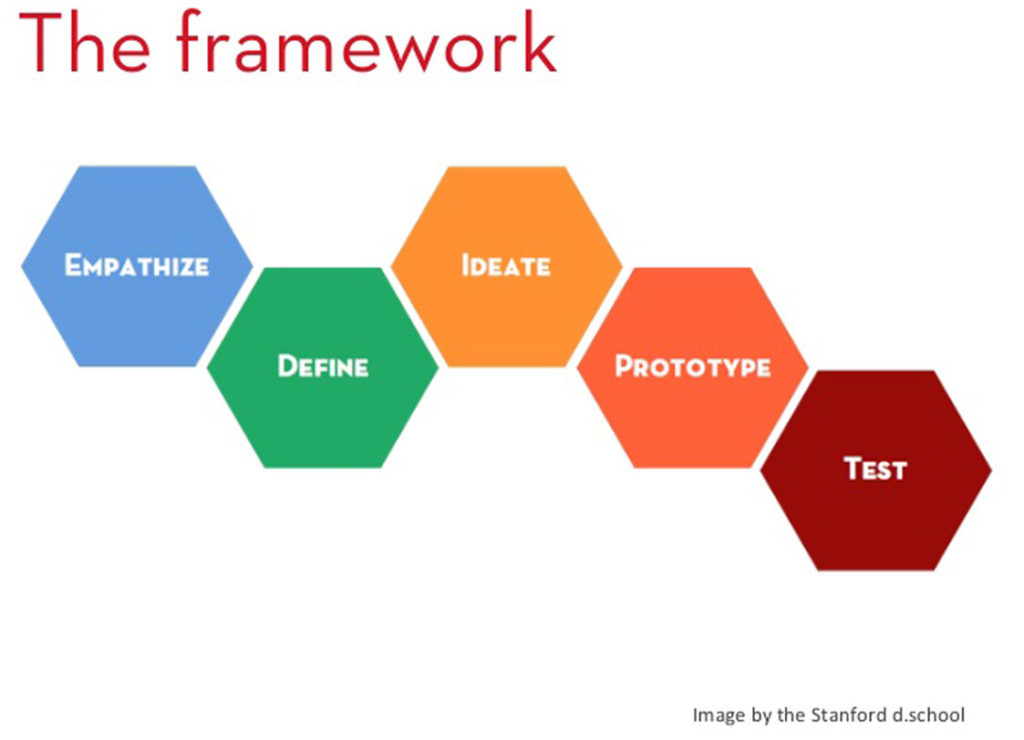
In my travels around the world working and advising leaders and companies on innovation activities, I hear a similar challenge:
“We ran this idea challenge, and it was great. We got a lot of ideas but nothing ever came after that.”
Employees are full of great ideas, and some bad ones too. Customers often have really practical ideas to solve their problems. Vendors you work with may have wonderful ideas that they have seen work in different areas, competitors, etc. So many great ideas. The challenge is, ideation, or brainstorming, is actually the middle step in a 5 step process built to generate new ideas, but also new products (and revenue) from those ideas.
Design thinking has been around for a while, but has recently become a trend in many organizations. Design Thinking, pioneered by people like Tim Brown and Roger Martin proved that design and empathy belong in every businesses vocabulary, not just startups or the arts.
In the Design Thinking Framework, it starts with thinking like a customer. Empathy, a common word used in the social sciences, has come into vogue in the business and tech communities in recent years. Very simply, empathy is the process where you spend some time and effort learning to understand the kind of challenges and opportunities exist with the people/group that you want to sell your product to.

So often this is done by asking customers in surveys or conducting focus groups. We all know customers do very different things than they say they do, and setting them up in a lab isn’t the best way to elicit natural behaviours. Let’s change this and live with them for a while. Watch them interact with existing solutions, your solution, a competitors. What if they don’t have a solution for a problem you see over and over again?
Once you’ve empathized and walked in the shoes of your target audience, redefine a problem statement in their eyes. A commonly used phrase is “How might we…”. How Might We statements are great for putting a problem statement in a way that makes it easier to envision what a solution might look like. Run through a number of these statements, then take them back to the target audience you were chatting with before and test their reactions.
Finally, we move to the ideation phase and we start to create ideas around a specific How Might We statement. Instead of throwing ideas against a whiteboard and hoping something will stick, get very specific about the problem you are trying to solve and focus your brainstorming on that, and only that. There are a number of ways to brainstorm productively, but I just want you to focus on a specific problem, instead of cool ideas you may want to build.
In the next post we’ll figure out what to do with those ideas next.
I hope you’ve seen how spending some time with your target audience, actually watching what they do instead of just hearing what they said, will provide some much-needed structure and direction to your brainstorming sessions. It will not only help you develop and think of more ideas, but actually put the customer at the centre of those ideas. That’s how you drive new revenue out of ideas, by putting the customer at the centre of everything.
I’d like to hear more companies tell me how they landed on very specific problems they found by observing the target customer, and came up with a few great ideas that would solve that specific problem, that we already know the customer wants solved.
Next week’s post will focus on how to build prototypes quickly so that you can test as many ideas as possible, saving you time, money, and major mistakes.

Craig Haney holds a Masters degree from University of Waterloo in Entrepreneurship and has been leading the charge for corporate innovation in Canada for almost 10 years. His work with Canadian Tire Innovations helped launch the corporate innovation program at Communitech. Currently Craig is the Vice President of Europro, a large real estate developer in Ontario.




















